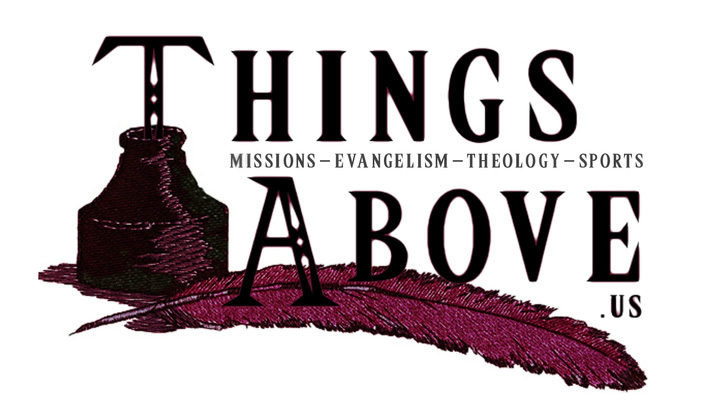“See the true and better Adam; come to save the hellbound man.” –
Come Behold the Wondrous Mystery, Matt Papa.
In this series, we have been looking at what God’s Word says about adoption as both an earthly call to care for orphans and as a picture of how He saves undeserving sinners in need of a right relationship with Him. You can read Parts I, II, III, IV, and V here. In this article, we see how adoption plays into the through-line of Scripture as a unified whole.
As I explained in the previous article, Millard Erickson gives us a helpful process of doing theology by starting with exegesis (interpreting the Biblical texts), moving on to biblical theology (the through-line of Scripture), and then systematic theology (specific doctrines).[1] We have already taken the first step (exegesis) of interpreting some passages from the Old and New Testaments that deal with God’s concern for the fatherless and how he adopts believers as his forever children. In this article, we will look to biblical theology to see where the doctrine of adoption fits into the Bible as a whole.
What is Biblical Theology?
In one sense, it should be obvious that any true and correct theology should be “biblical.
At the same time, we still need to think carefully about what we mean by that. John Owen once said that “As the Word of God is enclosed in the Scriptures, so the Scripture is our theology, to such an extent that we assign complete authority to every part of it, and to each and every truth contained in it.”[2] Geerhardus Vos defined Biblical Theology as “that branch of Exegetical Theology which deals with the process of the self-revelation of God deposited in the Bible.”[3] For Vos, “revelation” in this context involves God’s activity in connection with redemptive history. More recently, James Hamilton said that the purpose of Biblical Theology is to gain a clearer grasp of the Bible’s own theology by using an inductive hermeneutic (method of interpretation) with salvation history in view and the themes of Scripture, the harmony and interplay of those themes within their canonical and literary status.[4] Instead of competing, the disciplines of exegesis, biblical theology, and systematic theology can and should be done in harmony with one another. The health of the church is improved by all three.[5]
Adoption and Biblical Theology
So what can Biblical Theology show us about the doctrine of adoption? First, let’s look at the idea of being a child of God. When the Bible tells us that “Israel” is God’s firstborn son, what does that actually mean? What does God intend for us to understand on this side of the cross? Biblical theology shows us that Israel’s sonship is at the very least, an important metaphor concerning an element of how God’s relates to his people.[6] National Israel was God’s firstborn son in some sense, and at the same time, God promised a Davidic king who was also his son (cf. Ex 4:22; 2 Sm 7:14; Ps 2:7,12).
Tom Schreiner reasoned that the Old Testament points us to Christ in fulfillment of this kingly role as well as that of true Israel, the firstborn.[7] G.K. Beale reaches back even farther and says that the role of God’s firstborn was a mantle that was passed from Adam to Noah and then to Israel.[8] He makes the case for a through-line of “Son of Man” and “Son of God” referring to Old Testament Adam and Israel respectively.[9] In other words, the Adam of Genesis was merely the First Adam awaiting the revelation of Christ as the Second Adam. It logically follows that Israel was called to be a “corporate national Adam” who were given the responsibility to represent what true humanity was designed to look like (cf. Dt 4:6-8).[10]
Conclusion
When spiritual adoption itself is examined through the lens of biblical theology the themes of sonship, election, and adoption come into sharper focus and connection with each other. Much in the way that God’s initiating grace extended to Israel in the OT, the announcement comes in the NT that Jews and Gentiles alike have been predestined to be adopted by God to the praise of his glorious grace (cf. Eph 1:4-6).[11] The connection between God’s predestinating grace and his adoption of sinners is perfectly consistent with his choice of Isaac over Ishmael and Jacob over Esau (cf. Gn 17:18-21; 25:21-23).[12] Beale is particularly helpful at this stage in drawing Israel’s status as firstborn into a relationship with NT adoption. As he explains, the NT believer’s status as an adopted son of God is through identification with Christ the true firstborn Son, thereby granting the believer a place within true Israel’s OT lineage (cf. Rm 8:15,23; 9:4).[13]
If you have never turned from your sin and looked to Jesus Christ as your Savior, do it now. He lived the perfect life as the true and better Adam and took the punishment we all deserve, then arose on the third day. God the Father is drawing sinners to himself by the power of God the Spirit. God not only forgives sinners based on the work of Christ, but He also adopts them into his forever family out of pure grace. In the next installment, we will look at adoption and systematic theology.
[1] Millard J. Erickson, Christian Theology, 3rd ed. (Grand Rapids: Baker Academic, 2013), 53-65.
[2] John Owen, Biblical Theology: The History of Theology from Adam to Christ (Grand Rapids: Soli Deo Gloria Publications, reprinted 2019), 17.
[3] Geerhardus Vos, Biblical Theology: Old and New Testaments (Carlisle: Banner of Truth, reprinted 2017), 5.
[4] James M. Hamilton Jr., God’s Glory in Salvation Through Judgement: A Biblical Theology. (Wheaton: Crossway, 2010), 47.
[5] Ibid.
[7] Thomas R. Schreiner, The King in His Beauty: A Biblical Theology of the Old and New Testaments (Grand Rapids: Baker Academic, 2013), 436.
[8] G.K. Beale, A New Testament Biblical Theology: The Unfolding of the Old Testament in the New (Grand Rapids: Baker Academic, 2011), 402.
[9] Ibid., 652.
[11] Hamilton, God’s Glory in Salvation Through Judgement., 480-481.
[12] Schreiner, The King in His Beauty, 561.
[13] Beale, New Testament Biblical Theology, 708.






You have to love God more than this life. This life is a blink of the eye. It is only…